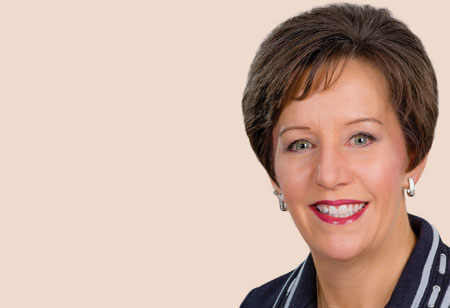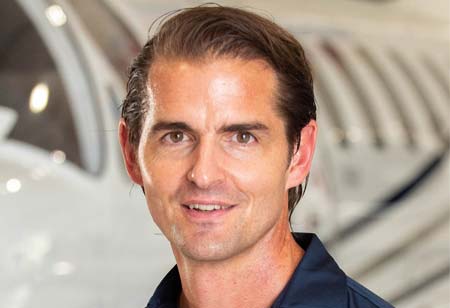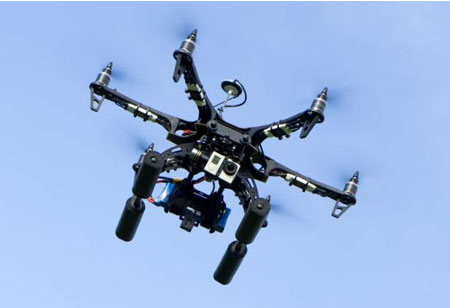THANK YOU FOR SUBSCRIBING

How Commercial Satcom is Delivering new Capabilities for The Uavs of Today and Tomorrow
Rebecca Cowen-Hirsch, Senior Vice President, Government Policy & Strategy, Inmarsat

 Rebecca Cowen-Hirsch, Senior Vice President, Government Policy & Strategy, Inmarsat
Rebecca Cowen-Hirsch, Senior Vice President, Government Policy & Strategy, InmarsatWhile advancements in Unmanned Aerial Vehicles (UAVs) have emerged as a “buzzworthy” topic for the military and government in recent years, the technology has served our nation well for more than a century. At least two years before the Wright brothers’ first crewed flight on December 17, 1903, warfighters deployed archaic UAV technology for combat and surveillance.
Since then, technological innovation – including satellite communications (SATCOM) — has greatly expanded capabilities to accommodate constantly shifting Department of Defense (DoD) user demands.Military operations are increasingly reliantupon UAVs for a range of Command and Control (C2) and Airborne Intelligence, Surveillance, and Reconnaissance (AISR) missions. Many of these missions require Beyond Line of Sight (BLOS) communications links that enable these platforms to deliver intelligence in real-time.
Also, AISR and other highly mobilegovernmentcommunities increasingly deploy sensors to maximize their effectiveness and reach.Further innovations in tactical UAVs and Remotely Piloted Aircraft Systems (RPAS) add capabilities to the mix, yet also come with their data and C2 requirements. These factors increasingly drive demand for high-throughput bandwidth availability and reliability.
With such developments steering industry and government toward the path of a productive partnership, there is a great opportunity to work together to augment and complement existing and future military SATCOM (MILSATCOM) in support of these highly agileairborne operations with global coverage, high-throughput, small-footprint antennas, and anywhere/anytime connectivity, along with SATCOM diversity, reliability and security.
"A great opportunity to work together to augment and complement existing and future military satcom (milsatcom) in support of these highly agile airborne operations"
The satellite industry, in response, is delivering advancements in the form of improved capabilities and business models – such as SATCOM as a Service, with always-on access to reliable SATCOM, anytime and anywhere – that allows the DoD to leverage complementary commercial satellite communications (COMSATCOM). Leveraging commercial satelliteboosts the effectiveness, flexibility, and resiliencyof MILSATCOM systems for dynamic and global crewlessmissions, with Ka-band emerging as the optimal option due to its ability to interoperate with military satellite resources.
Specifically, commercialinnovation and investmentsare addressing the following needs and capabilities:
A Superior “Smaller Package.” The AISR community prefers smaller antennas since platform real estate is always at a premium. Furthermore, higher performance can fit on smaller airframes and blend better into aerodynamic surfaces, thus extending fuel efficiency and range, as well as reducing the “signature” in covert applications. With Ka-band, airborne missions benefit from antennas that are as small as 30cm and allow for an efficient platform installation using low size, weight, and power (SWaP) user terminals. These terminals bring access to commercial and military Ka-band services worldwide with return link data rates that supports user-specified data rates at a much lower total cost to operate than other solutions.
Ubiquitous Coverage. Ka-band high-throughput satellites (HTS)are created by many service beams that are seamlessly connected and provide global coverage andconsistency of performance across the entireworldwide network,like Inmarsat. Global coverage ensuresan AISR platform never loses high-speedconnectivity while conducting a mission.
Interoperable Capacity. Commercial steerable spot beams, like those of Inmarsat, make available high-throughput capacity anywhere on the GEO-visible Earth. Thesesteerable spot beams can be used to providemilitary Ka-band coverage in the theater (up to730MHz duplex bandwidth) or to follow anAISR platform and deliver very high EquivalentIsotropically Radiated Power (EIRP) and G/Tcoverageusing channel sizes from 40MHz to730MHz. Securely and independently pointed steerable spot beam antennas can accommodate channels assigned toHigh Capacity Military (HCM), High Capacity Commercial (HCC) and HCX applications. HCCchannels designed to complement globalservice, beams in high demand areas.
Security. For trusted commercial owner-operators, resiliency, redundancy and reliability are paramount. We build cybersecurity into our robust, end-to-end systems – from the satellites to the ground segment, to the terrestrial fiber. Furthermore, Ka-band spot beam architecture allows for superior interference resistance, as the narrow spot beams can be directed to adapt and respond to interference events, denial of service attacks or expand capacity in surge spots to enhance diversity and resilience.
Cost-effective Turnkey Services. Historically, legacy fixed SATCOM operators have attempted to respond to needs by supplying bandwidth leased on a regional basis. However, this dependence upon excess broadcast capacity designed for fixed users is inefficient. Current military operational tempo and highly mobile applications merit reliable wideband mobility and solutions for increased agility and worldwide portability, as optimal performance and “anytime, anywhere” availability is of utmost importance. The aforementioned SATCOM as a Service brings a turnkey space and ground segment in an end-to-end network managed by a single operator. Users leverage it for global coverage, while “on-the-fly” demand drives resource allocation significantly to reducethe total cost of ownership while offering an assured quality of service.
Senior government leadership has recognized COMSATCOM as a primary resource of the future, building a path toward enterprise-level, integrated architecture, and strategy to ensure reliable, always available, resilient seamless, state-of-the-art capabilities. For theintegrated architecture to enable ideal interoperability, diversity and flexibility — with both the contiguous commercial and military frequencies — industry-delivered SATCOM must, and will, play a critical role.
Read Also




















ON THE DECK